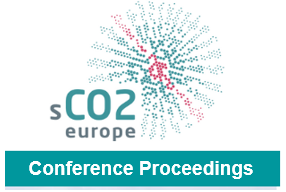Microstructural evaluation of preselected steels for turbine after supercritical CO2 exposure
The energy conversion cycles with supercritical carbon dioxide (sCO2) are being considered as an innovative technology with potential for replacement of conventional steam cycles within various applications such as nuclear, fossil or renewable energy resources. Due to extreme operational conditions including temperatures above 550°C and pressures up to 25 MPa, proper selection of materials is essential for a suitable design of the thermal circuit. Several materials that were identified as potentially suitable for the main components of the sCO2 circuits were exposed in the sCO2 relevant conditions in the sCO2 experimental loop at Research Centre Rez (CVR). The experimental conditions were represented by the sCO2 temperature of 550°C, pressure of 25 MPa, flow conditions and 1000 hours of exposure. Moreover, an additional test section where the sCO2 flow velocity up to 100 m/s was achieved was designed and utilized to simulate turbine relevant conditions.
Suitability of the materials preselected for the sCO2 turbomachinery will be evaluated and discussed in this paper. For the experiments, four types of materials (FB2, 17-4-PH, 625M, IN718) were selected. After the exposure, the corrosion behaviour and oxidation of the materials was investigated including surface analyses and cross sections examination. The paper presents the experimental parameters including the high velocity test section design. The materials degradation will be evaluated as well as the effect of the high velocity flow.
Vorschau

Zitieren
Rechte
Nutzung und Vervielfältigung:
Dieses Werk kann unter einer Creative Commons Namensnennung 4.0 Lizenz (CC BY 4.0)
Creative Commons Namensnennung 4.0 Lizenz (CC BY 4.0)
genutzt werden.
